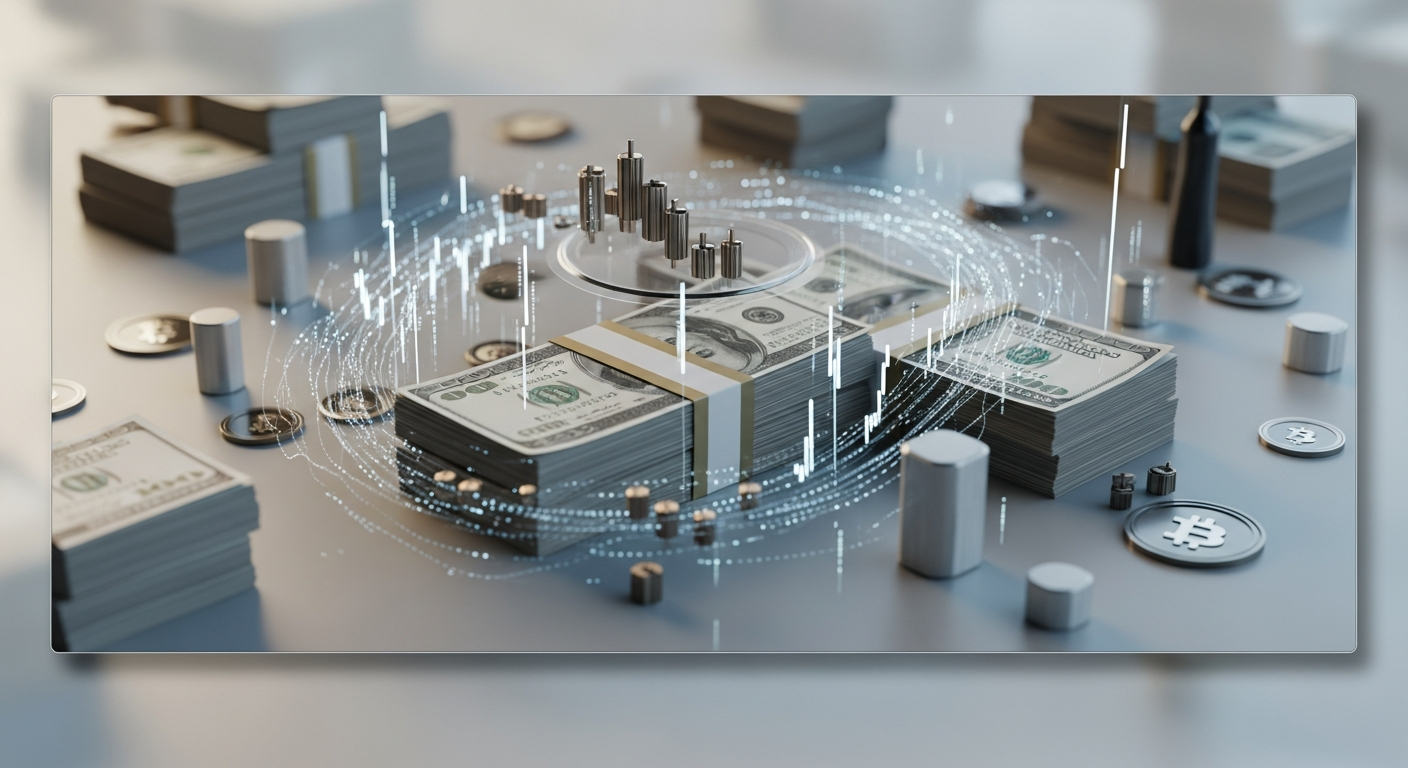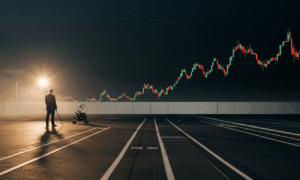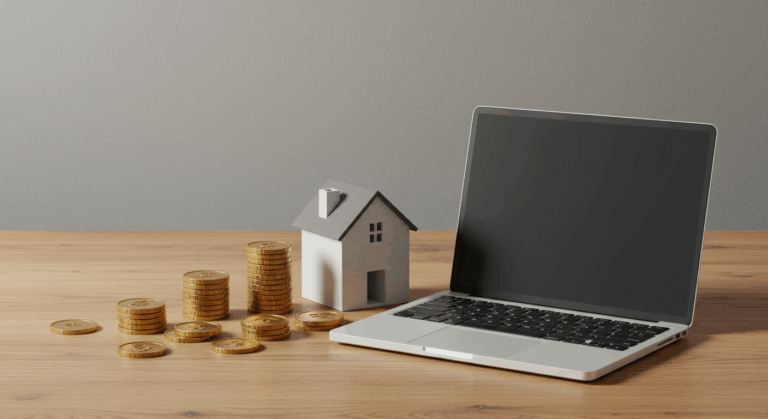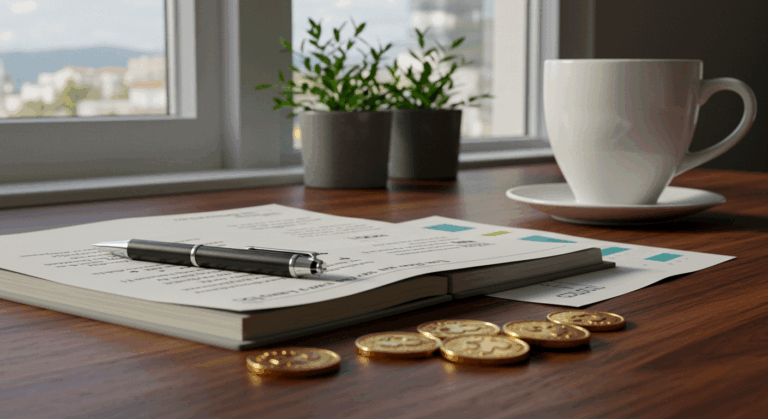Quantitative Easing (QE): What Is the Central Banks’ Money-Printing Machine?
You have likely heard the term money printing on the news, especially during times of economic turmoil or when financial markets seem volatile. It often conjures images of a government running printing presses nonstop. However, the reality is a far more complex and sophisticated policy known as Quantitative Easing (QE). This powerful tool, used by central banks around the world, has profound effects on the economy, interest rates, and ultimately, your personal finances.
Understanding QE is no longer just for economists; it is essential for anyone looking to make informed decisions about their money. This article will demystify Quantitative Easing, explaining exactly what it is, how it works, and what it means for your savings, borrowings, and investments. We will break down this complex topic into clear, understandable concepts to help you navigate today’s economic landscape.
What Exactly is Quantitative Easing?
Quantitative Easing is an unconventional monetary policy tool used by a country’s central bank to stimulate the national economy. It is typically implemented when more traditional methods, such as lowering the benchmark short-term interest rate, are no longer effective—usually because rates are already at or near zero. At its core, QE is a strategy to increase the money supply and encourage lending and investment.
A common misconception is that QE is the literal printing of physical cash. This is not accurate. Instead, the central bank creates new money electronically, as digital central bank reserves. It is less like a physical printing press and more like the central bank adding funds to its own account with a few keystrokes. It then uses this newly created digital money to purchase financial assets on a massive scale from the open market.
The Mechanics: How QE is Implemented Step-by-Step
To understand the impact of QE, it is crucial to know the process. While the details can vary between countries, the general mechanism follows a clear sequence of events designed to inject liquidity into the financial system.
- Creation of Central Bank Reserves: The central bank, such as the Federal Reserve in the United States or the European Central Bank, decides it needs to stimulate the economy. It commits to creating a specific, large amount of new money. This money does not exist as paper bills but as electronic reserves.
- Asset Purchases: The central bank uses these new reserves to buy assets from commercial banks and other financial institutions. The primary assets purchased are usually government bonds. In some cases, central banks may also buy other assets like mortgage-backed securities or even high-quality corporate bonds.
- Increased Liquidity for Banks: When commercial banks sell these assets to the central bank, their own reserve accounts are credited with the newly created money. Suddenly, these banks are flush with cash. They have swapped a less liquid asset (like a long-term bond) for a highly liquid one (cash reserves).
- Lowering Interest Rates and Encouraging Lending: The large-scale purchase of bonds increases their price. In the bond world, when prices go up, their yields (the effective interest rate) go down. This action directly lowers long-term interest rates. With more cash on hand and the incentive of low returns on safe assets, banks are theoretically encouraged to lend more money to businesses and individuals at cheaper rates.
- Stimulating Economic Activity: The ultimate objective is for this chain reaction to boost the broader economy. Cheaper mortgages encourage home buying, lower loan rates spur business expansion and hiring, and increased liquidity supports financial markets. All these factors are intended to drive spending and investment.

Why Do Central Banks Resort to QE?
Central banks do not use QE lightly. It is a powerful measure reserved for extraordinary circumstances, such as a deep recession, a major financial crisis, or the threat of deflation. The primary goals are to restore stability and foster economic growth when traditional policy levers are exhausted.
The key objectives include:
- To Combat Deflation: Deflation, a period of consistently falling prices, can be even more damaging than inflation. It encourages consumers to delay purchases, expecting prices to be even lower in the future, which can grind an economy to a halt. QE aims to create a healthy, low level of inflation by increasing the money supply.
- To Lower Long-Term Borrowing Costs: By directly purchasing long-term bonds, central banks can influence interest rates beyond just the short-term rates they normally control. This makes it cheaper for consumers to get mortgages and for companies to finance long-term projects, stimulating demand.
- To Boost Asset Prices and Confidence: QE often leads to higher prices for financial assets like stocks and real estate. This can create a wealth effect, where households feel wealthier and become more willing to spend. Furthermore, the act of implementing QE sends a strong signal to markets and the public that the central bank is committed to supporting the economy, which can help restore confidence.
The Real-World Impact: What QE Means for You
The effects of Quantitative Easing are not confined to financial markets; they ripple out and affect individuals in very direct ways. Depending on your financial situation, QE can be either a significant benefit or a frustrating challenge.
For Savers
If you are diligent about putting money aside, QE creates a difficult environment. The policy is explicitly designed to push interest rates down. This means the returns on your savings accounts, money market accounts, and certificates of deposit will likely be extremely low, often failing to keep pace with inflation. Your savings may actually lose purchasing power over time.
For Borrowers
Conversely, for those looking to borrow money, QE can be highly advantageous. The downward pressure on interest rates leads to cheaper mortgages, auto loans, and personal loans. It can be an opportune time to refinance existing debt at a lower rate or to finance a major purchase that would otherwise be unaffordable.
For Investors
Investors often see significant benefits from QE. With bond yields suppressed, investors seeking a decent return are pushed toward riskier assets, such as stocks. This increased demand can drive up the stock market. This is a core principle of modern investment strategy: understanding how central bank actions influence asset allocation. Real estate prices can also rise due to cheaper mortgage financing.
The Risks and Controversies Surrounding QE
Despite its potential benefits, QE is a highly controversial policy with several significant risks that must be carefully managed. Critics argue that its long-term consequences could outweigh its short-term gains.
The primary risks include:
- Inflationary Pressure: The most prominent fear is that flooding the economy with new money will eventually lead to runaway inflation. If the amount of money in circulation grows much faster than the production of goods and services, the value of that money decreases, and prices rise rapidly.
- Asset Bubbles: By keeping interest rates artificially low and pushing investors into riskier assets, QE can inflate the prices of stocks and real estate beyond their fundamental value. This creates dangerous asset bubbles that, if they burst, could trigger another financial crisis.
- Widening Wealth Inequality: QE tends to disproportionately benefit those who own financial assets. Since wealthier individuals own the vast majority of stocks and bonds, they see their net worth increase significantly, while savers and those on fixed incomes are penalized by low interest rates. This can exacerbate the wealth gap.
- Difficult Exit Strategy: Once an economy becomes accustomed to the support of QE, reversing the policy is a delicate and risky operation. The process, known as Quantitative Tightening (QT), involves the central bank shrinking its balance sheet. If done too quickly, it can cause interest rates to spike, shocking financial markets and potentially tipping the economy into a recession.
Conclusion
Quantitative Easing is one of the most powerful and transformative economic tools of the modern era. It is not simply printing money, but a complex mechanism for injecting liquidity into the financial system to fight severe economic downturns. It works by lowering long-term interest rates, encouraging lending, and boosting asset prices, with the ultimate goal of stimulating growth.
However, this power comes with substantial trade-offs and risks, including the potential for high inflation, the creation of asset bubbles, and the widening of wealth inequality. For individuals, understanding QE is vital for making sound financial decisions—whether you are saving for retirement, borrowing for a home, or managing an investment portfolio. If you are concerned about how these large-scale economic policies affect your personal financial strategy, seeking guidance from a qualified financial professional with demonstrable experience is a prudent step.
Frequently Asked Questions (FAQ)
What is the opposite of Quantitative Easing (QE)?
The opposite of QE is known as Quantitative Tightening (QT). During QT, the central bank reverses the QE process. It reduces the size of its balance sheet by either selling the assets it previously purchased or by allowing them to mature and not reinvesting the principal. This action effectively removes money from the financial system, which tends to increase interest rates and can act as a brake on the economy to control inflation.
Does QE always lead to high inflation?
Not necessarily. While QE increases the potential for inflation by expanding the money supply, the actual outcome depends on other economic factors. For inflation to take hold, the new money must be actively lent out by banks and spent by businesses and consumers. If banks are cautious and simply hold onto the extra reserves, or if overall economic confidence is low, the money does not circulate rapidly, and inflation may remain subdued.
How does QE affect a country’s currency?
In general, Quantitative Easing tends to put downward pressure on a country’s currency. By increasing the domestic money supply and lowering interest rates, it makes holding that currency less attractive to foreign investors who seek higher returns. This reduced demand can cause the currency’s value to fall relative to other currencies on the foreign exchange market.





